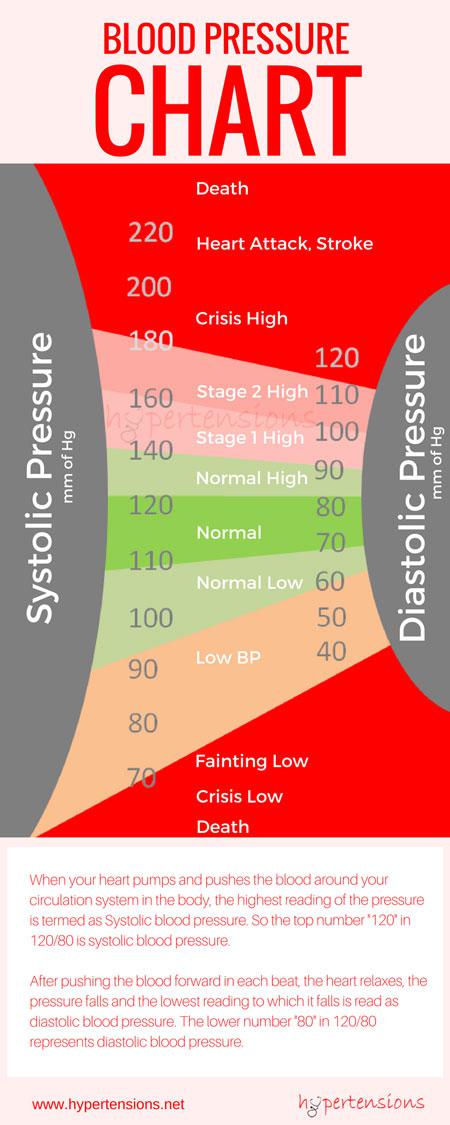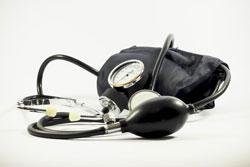Ever wondered what those two numbers on your blood pressure reading mean?
You're not alone! Blood pressure is an important health indicator, and understanding it can empower you to take charge of your well-being. This friendly guide will explain how to read a blood pressure chart and what the different readings signify.
Deciphering Your Blood Pressure Numbers:
Imagine your blood pressure reading as a fraction: 120/80mmHg (millimeters of mercury). The top number (120) represents your systolic blood pressure.
This is the pressure exerted on your artery walls when your heart beats and pushes blood throughout your body.
The bottom number (80) represents your diastolic blood pressure. This is the pressure remaining in your arteries between heartbeats when your heart relaxes.
The Blood Pressure Chart: Your Guide to Normal, Low, and High Readings
A healthy blood pressure reading is generally considered to be 120/80mmHg. However, it's important to understand the different categories on a blood pressure chart:

- Normal Blood Pressure (Normotension): Readings within the range of less than 120/80mmHg. This is the ideal zone where your blood pressure is putting a healthy amount of pressure on your arteries to circulate blood throughout your body without causing damage.
- Low Blood Pressure (Hypotension): Readings consistently below 90/60mmHg. While sometimes harmless, low blood pressure can cause dizziness or fainting in certain individuals. This can be due to dehydration, certain medications, or underlying health conditions. If you frequently experience symptoms like dizziness or fainting along with low blood pressure readings, it's important to consult your doctor to determine the cause.
- Prehypertension: Readings consistently between 120/80mmHg and 140/90mmHg. This indicates an elevated blood pressure that can progress to high blood pressure if left unchecked. Think of prehypertension as a warning sign. It's a good time to talk to your doctor about ways to prevent your blood pressure from reaching higher levels.
- High Blood Pressure (Hypertension): Readings consistently at or above 140/90mmHg. This is a serious condition that requires lifestyle changes and potentially medication to manage. High blood pressure is a leading risk factor for heart disease, stroke, and kidney disease. Here, the long-term strain of high blood pressure can damage your arteries and organs.
High Blood Pressure Stages
If you have high blood pressure, it's further categorized based on the severity: Readings consistently at or above 140/90mmHg. This is a serious condition that requires lifestyle changes and potentially medication to manage. High blood pressure is further categorized:
- Stage 1 Hypertension: Readings between 140/90mmHg and 160/100mmHg. Often controllable with lifestyle modifications.
- Stage 2 Hypertension: Readings consistently above 160/100mmHg. Requires medication alongside lifestyle changes.
- Hypertensive Crisis: Readings at or exceeding 180/110mmHg. This is a medical emergency, and immediate medical attention is crucial (call 911).
It's All About Balance: Maintaining a Healthy Blood Pressure
The good news? Blood pressure is often influenced by lifestyle factors. Here are some tips to keep your blood pressure in a healthy range:
- Eat a balanced diet: Focus on fruits, vegetables, whole grains, and lean protein. Limit processed foods, saturated fats, and added sugar. A diet rich in fruits, vegetables, and whole grains is naturally lower in sodium and provides essential nutrients that can help regulate blood pressure.
- Maintain a healthy weight: Excess weight puts extra strain on your heart, making it work harder to pump blood throughout your body. This increased workload can lead to high blood pressure. Losing even a modest amount of weight can significantly improve your blood pressure readings.
- Exercise regularly: Aim for at least 30 minutes of moderate-intensity exercise most days of the week. Physical activity helps your heart function more efficiently and keeps your blood vessels flexible. Examples of moderate-intensity exercise include brisk walking, swimming, cycling, or dancing.
- Manage stress: Chronic stress can contribute to high blood pressure. When you're stressed, your body releases hormones that can temporarily raise your blood pressure. Finding healthy ways to manage stress is crucial. Relaxation techniques like deep breathing, yoga, meditation, or spending time in nature can all be helpful.
- Limit alcohol: Excessive alcohol consumption can raise blood pressure. Alcohol can also interfere with the effectiveness of blood pressure medications. If you drink alcohol, do so in moderation.
- Don't smoke: Smoking damages your blood vessels and increases your risk of heart disease and stroke. Quitting smoking is one of the best things you can do for your overall health, including your blood pressure.
- Reduce sodium intake: Sodium, the main component of table salt, can contribute to high blood pressure. Aim to limit your sodium intake to no more than 2,300 milligrams (mg) per day, and ideally less than 1,500 mg per day for optimal blood pressure control.
- Get enough sleep: Aim for 7-8 hours of quality sleep each night. Insufficient sleep can disrupt hormones that regulate blood pressure. Develop a relaxing bedtime routine and create a sleep-conducive environment in your bedroom.
- Regular doctor visits: Schedule regular checkups with your doctor to monitor your blood pressure and discuss any concerns you may have. Early detection and treatment of high blood pressure are crucial to prevent complications.
Monitoring Your Blood Pressure at Home
Home blood pressure monitors allow you to conveniently track your blood pressure readings between doctor visits. Here are some tips for accurate home blood pressure monitoring:
- Choose a validated upper arm cuff monitor.
- Sit comfortably with your back supported and your feet flat on the floor.
- Avoid smoking, caffeine, or exercise for at least 30 minutes before taking a reading.
- Take multiple readings throughout the day and at different times to get a more accurate picture of your overall blood pressure.
- Record your readings and share them with your doctor at your next appointment.
Bottom Line
By understanding your readings through a blood pressure chart and taking proactive steps towards a healthy lifestyle, you can significantly reduce your risk of chronic diseases.
Remember, even small changes in diet, exercise, and stress management can make a big difference. Partner with your doctor to create a personalized plan and live a long, fulfilling life!

